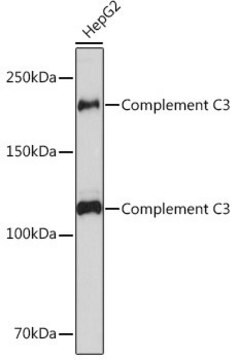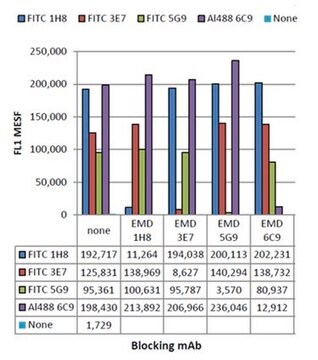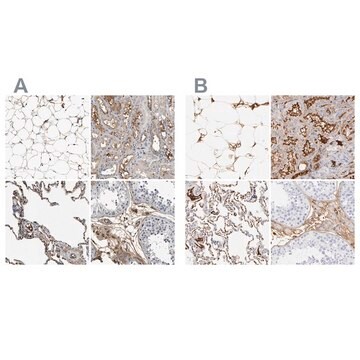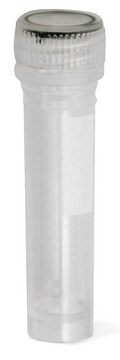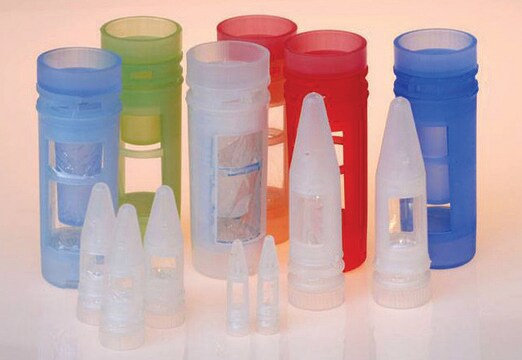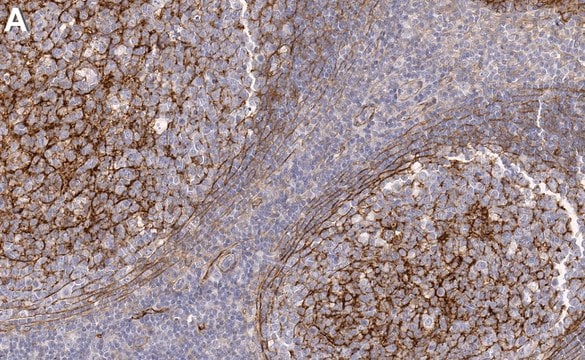MABF1978
Anti-Complement C3a/C3a (desArg) Antibody, clone K13/16
clone K13/16, from mouse
Synonyme(s) :
Complement C3a, C3 and PZP-like alpha-2-macroglobulin domain-containing protein 1
About This Item
Produits recommandés
Source biologique
mouse
Niveau de qualité
Forme d'anticorps
purified antibody
Type de produit anticorps
primary antibodies
Clone
K13/16, monoclonal
Espèces réactives
human
Conditionnement
antibody small pack of 25 μL
Technique(s)
flow cytometry: suitable
immunohistochemistry: suitable (paraffin)
neutralization: suitable
Isotype
IgG1κ
Numéro d'accès NCBI
Numéro d'accès UniProt
Conditions d'expédition
ambient
Modification post-traductionnelle de la cible
unmodified
Informations sur le gène
human ... C3(718)
Description générale
Spécificité
Immunogène
Application
Agonist or Inhibitor Analysis: Administration of C3a induces a transient influx of Ca2+ release in a dose dependent manner (fluo-3 staining on human PMNs). In this regard, it functions as an agonist for the C3a receptor (Elsner, J., et. al. (1994). Blood. 83(11):3324-31).
Neutralizing Analysis: A representative lot detected Complement C3a/C3a (desArg) in Neutralizing applications (Elsner, J., et. al. (1994). Blood. 83(11):3324-31).
Flow Cytometry Analysis: A representative lot detected Complement C3a/C3a (desArg) in Flow Cytometry applications (Elsner, J., et. al. (1994). Blood. 83(11):3324-31).
Inflammation & Immunology
Qualité
Immunohistochemistry Analysis: A 1:50 dilution of this antibody detected Complement C3a/C3a (desArg) in human kidney tissue sections.
Description de la cible
Forme physique
Stockage et stabilité
Autres remarques
Clause de non-responsabilité
Vous ne trouvez pas le bon produit ?
Essayez notre Outil de sélection de produits.
Certificats d'analyse (COA)
Recherchez un Certificats d'analyse (COA) en saisissant le numéro de lot du produit. Les numéros de lot figurent sur l'étiquette du produit après les mots "Lot" ou "Batch".
Déjà en possession de ce produit ?
Retrouvez la documentation relative aux produits que vous avez récemment achetés dans la Bibliothèque de documents.
Notre équipe de scientifiques dispose d'une expérience dans tous les secteurs de la recherche, notamment en sciences de la vie, science des matériaux, synthèse chimique, chromatographie, analyse et dans de nombreux autres domaines..
Contacter notre Service technique
